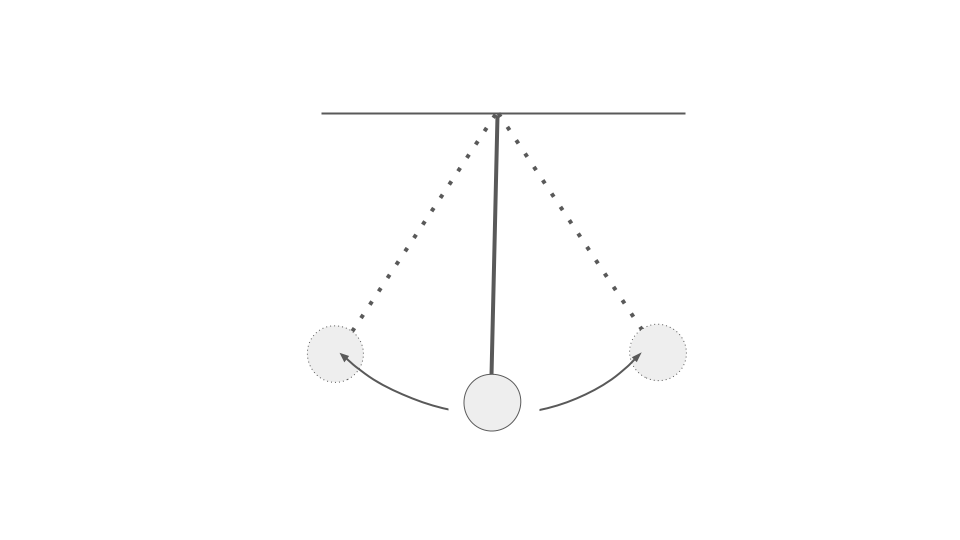penduluming

One of the mental models I repeatedly use is the idea of a pendulum.
The pendulum swings between two extremes; the two most outer points. Each position of the pendulum can be mapped to a position we could take on some decision. The extreme positions of the pendulum are the extremes positions in the decision.
When this mental model is applied to decisions, I call it penduluming.
I’ve seen it in the way we write code, in the way we structure our teams, in the database technologies we use. Virtually all choices and decisions we make could suffer from penduluming.
Just like the pendulum, when you are in the most extreme and most outer position, you also have;
- the least momentum in the current direction
- the strongest force pulling you in the opposite direction
- the most stored kinetic energy
When you are on one of the extremes, the positives and benefits of the other extreme position look attractive, you forsake any moderation and make a series of decisions that swing the pendulum hard back the other way.
The other position of the pendulum looks attractive because of the physics of pendulums. At the very extreme, you are experiencing the strongest force pulling you in the opposite direction. Which is reflected as the least momentum in your current direction.
The lack of momentum feels really bad, because previously you’ve been travelling at your fastest speed, but recently you’ve slowed to almost a halt. The halt happens just as the opposite extreme looks the most attractive.
This is the most dangerous moment, you have the most stored kinetic energy ready to be released in the opposite direction. You agree that a change of course is necessary and head in the other direction. This starts to deploy the kinetic energy that’s stored in your decisions. You start to gain momentum and speed, things feel great.
But you blast straight through the ’neutral’ position of the pendulum, and start swinging hard into the other extreme position. All the same issues start to happen again, you start loosing momentum and speed, and start to get pulled back in the direction you came from.
And so the cycle of penduluming continues.
At each of the extremes, when you are experiencing the most force in the opposite direction, you often aren’t correctly evaluating the relative merits of the other extreme position. Instead you are experiencing the pull of ’not this position’ rather than ‘yes that position’. It’s dangerous to make a choice based on not this rather than yes that.
In practice this is just a lesson in moderation. Having the mental model for how and why this happens helps too.